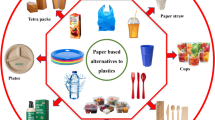Abstract
Medical devices (MDs) for infusion and enteral and parenteral nutrition are essentially made of plasticized polyvinyl chloride (PVC). The first step in assessing patient exposure to these plasticizers, as well as ensuring that the MDs are free from di(2-ethylhexyl) phthalate (DEHP), consists of identifying and quantifying the plasticizers present and, consequently, determining which ones are likely to migrate into the patient’s body. We compared three different extraction methods using 0.1 g of plasticized PVC: Soxhlet extraction in diethyl ether and ethyl acetate, polymer dissolution, and room temperature extraction in different solvents. It was found that simple room temperature chloroform extraction under optimized conditions (30 min, 50 mL) gave the best separation of plasticizers from the PVC matrix, with extraction yields ranging from 92 to 100 % for all plasticizers. This result was confirmed by supplemented Fourier transform infrared spectroscopy-attenuated total reflection (FTIR-ATR) and gravimetric analyses. The technique was used on eight marketed medical devices and showed that they contained different amounts of plasticizers, ranging from 25 to 36 % of the PVC weight. These yields, associated with the individual physicochemical properties of each plasticizer, highlight the need for further migration studies.


Similar content being viewed by others
References
PVCMed Alliance - PVC Healthcare Applications. accessed (http://www.pvcmed.org/learning-centre/pvc-medical-applications/)
European Union (2008) Regulation (EC) No. 1272/2008 of the European Parliament and of the Council on classification, labelling and packaging of substances and mixtures, amending and repealing Directives 67/548/EEC and 1999/45/EC, and amending Regulation (EC) No 1907/2006
European Union Directive 2007/47/EC on the European Parliament and of the Council of 5 September 2007 amending Council Directive 90/385/EEC on the approximation of the laws of the Member States relating to active implantable medical devices, Council Directive 93/42/EEC concerning medical devices and Directive 98/8/EC concerning the placing of biocidal products on the market
Scientific Committee on Emerging and Newly-Identified Health Risks Opinion on the Safety of Medical Devices containing DEHP-plasticized PVC or other plasticizers on neonates and other groups possibly at risk
Babich MA (2010) Review of exposure and toxicity data for phthalate substitutes
The Danish Environmental Protection Agency (2014) Alternatives to classified phthalates in medical devices
Wang Q, Storm BK (2005) Separation and analysis of low molecular weight plasticizers in poly(vinyl chloride) tubes. Polym Test 24:290–300. doi:10.1016/j.polymertesting.2004.12.002
Genay S, Luciani C, Décaudin B et al (2011) Experimental study on infusion devices containing polyvinyl chloride: to what extent are they di(2-ethylhexyl)phthalate-free? Int J Pharm 412:47–51. doi:10.1016/j.ijpharm.2011.03.060
Cano J, Marín M, Sánchez A, Hernandis V (2002) Determination of adipate plasticizers in poly(vinyl chloride) by microwave-assisted extraction. J Chromatogr A 963:401–409. doi:10.1016/S0021-9673(02)00642-8
Vandenburg HJ, Clifford AA, Bartle KD et al (1998) Factors affecting high-pressure solvent extraction (accelerated solvent extraction) of additives from polymers. Anal Chem 70:1943–1948. doi:10.1021/ac9710902
Möller J, Strömberg E, Karlsson S (2008) Comparison of extraction methods for sampling of low molecular compounds in polymers degraded during recycling. Eur Polym J 44:1583–1593. doi:10.1016/j.eurpolymj.2008.03.027
Luque de Castro MD, Priego-Capote F (2010) Soxhlet extraction: past and present panacea. J Chromatogr A 1217:2383–2389. doi:10.1016/j.chroma.2009.11.027
Abe Y, Mutsuga M, Hirahara Y, Kawamura Y (2011) Test method for 6 phthalates in polyvinyl chloride. Shokuhin Eiseigaku Zasshi J Food Hyg Soc Jpn 52:309–313
Guo C, Bo H, Duan W et al (2011) Determination of 46 plasticizers in food contact polyvinyl chloride packaging materials and their migration into food simulants by gas chromatography–mass spectrometry. Se Pu Chin J Chromatogr Zhongguo Hua Xue Hui 29:42–48
Starink R (2005) Results of proficiency test phthalates in PVC, March 2005. Institute for Interlaboratory Studies, Netherlands
Guo Z, Wang S, Wei D et al (2010) Development and application of a method for analysis of phthalates in ham sausages by solid-phase extraction and gas chromatography–mass spectrometry. Meat Sci 84:484–490. doi:10.1016/j.meatsci.2009.10.002
Faraji H, Mirzaie A, Waqif-Husain S (2013) Liquid phase microextraction-ion exchange-high performance thin layer chromatography for the preconcentration, separation, and determination of plasticizers in aqueous samples. J Sep Sci 36:1486–1492. doi:10.1002/jssc.201200995
Chanda M, Roy SK (2006) Plastics technology handbook, 4th edition. Hardcover
Wilkes CE, Daniels CA, Summers JW (2005) PVC handbook. PVC Handb., Hanser. pp 173–193
Kastner J, Cooper DG, Marić M et al (2012) Aqueous leaching of di-2-ethylhexyl phthalate and “green” plasticizers from poly(vinyl chloride). Sci Total Environ 432:357–364. doi:10.1016/j.scitotenv.2012.06.014
Bernard L, Décaudin B, Lecoeur M et al (2014) Analytical methods for the determination of DEHP plasticizer alternatives present in medical devices: a review. Talanta 129:39–54. doi:10.1016/j.talanta.2014.04.069
Jenke DR, Brennan J, Doty M, Poss M (2003) Use of binary ethanol/water model solutions to mimic the interaction between a plastic material and pharmaceutical formulations. J Appl Polym Sci 89:1049–1057. doi:10.1002/app.12263
Gimeno P, Thomas S, Bousquet C et al (2014) Identification and quantification of 14 phthalates and 5 non-phthalate plasticizers in PVC medical devices by GC-MS. J Chromatogr B Analyt Technol Biomed Life Sci 949–950:99–108. doi:10.1016/j.jchromb.2013.12.037
Acknowledgments
This study is a part of the project Assessment and Risk Management of Medical Devices in Plasticized Polyvinylchloride (ARMED) which has received the financial support of the French Medicine Agency (ANSM, Agence Nationale de Sécurité du Médicament et des Produits de Santé).
The authors wish to also thank the collaborators of the ARMED study group in its task 1 “Characterization of plasticizers in medical devices”: Lise Bernard, Daniel Bourdeaux, Philip Chennell, Damien Richard, Bruno Pereira, and Valérie Sautou (University Hospital, Clermont-Ferrand, France); Nathalie Azaroual, Christine Barthelémy, Bertrand Décaudin, Thierry Dine; Frédéric Feutry, Stéphanie Genay, Nicolas Kambia, Marie Lecoeur, Pascal Odou, Nicolas Simon, and Claude Vaccher (EA 4481, University of Lille 2, France); Régis Cueff and Emmanuelle Feschet (EA 4676 C-Biosenss, Auvergne University, France); and Colette Breysse (Technology Research Centre CASIMIR, Aubière).
Conflict of interest
None.
Author information
Authors and Affiliations
Consortia
Corresponding author
Rights and permissions
About this article
Cite this article
Bernard, L., Cueff, R., Bourdeaux, D. et al. Analysis of plasticizers in poly(vinyl chloride) medical devices for infusion and artificial nutrition: comparison and optimization of the extraction procedures, a pre-migration test step. Anal Bioanal Chem 407, 1651–1659 (2015). https://doi.org/10.1007/s00216-014-8426-z
Received:
Revised:
Accepted:
Published:
Issue Date:
DOI: https://doi.org/10.1007/s00216-014-8426-z




